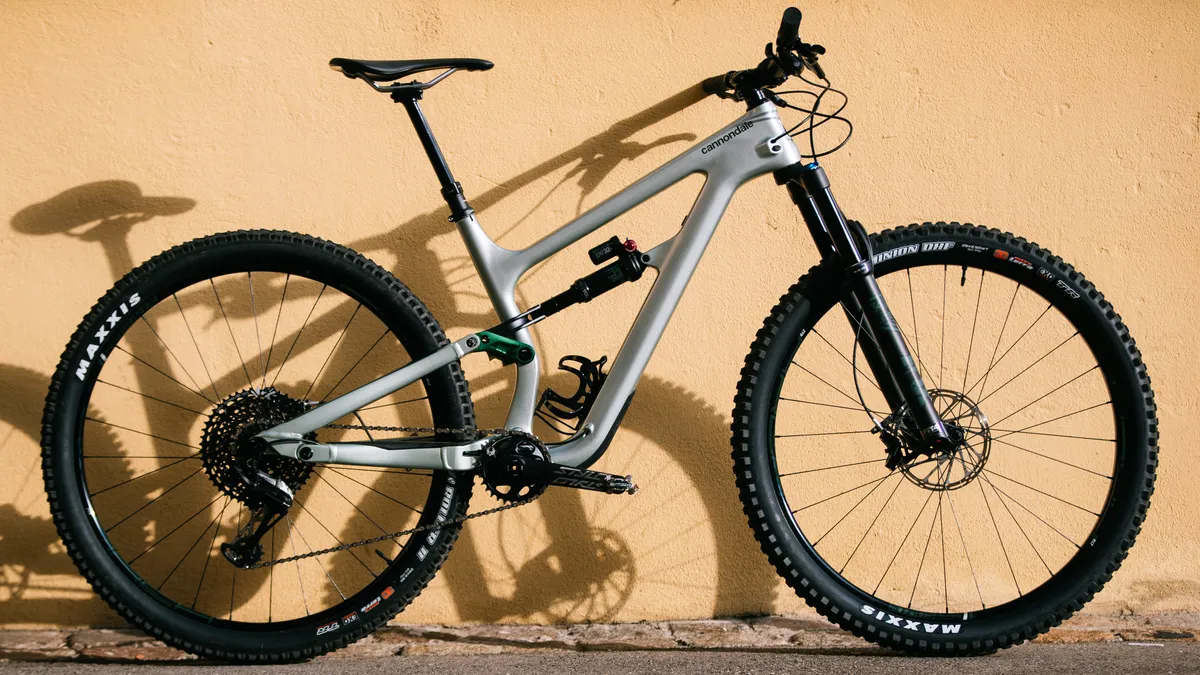Cannondale has moved the Habit away from its cross-country roots. The new version is a 130mm-travel 29er/27.5+ trail bike, with considerably longer, slacker geometry than its predecessor.
Not only that, but the Habit is Cannondale’s first bike to use a Horst-link suspension design, which is where a pivot is used between the rear axle and the main pivot.
- The ultimate guide to mountain bike rear suspension systems
- Best mountain bike: how to choose the right one for you
Size-specific suspension
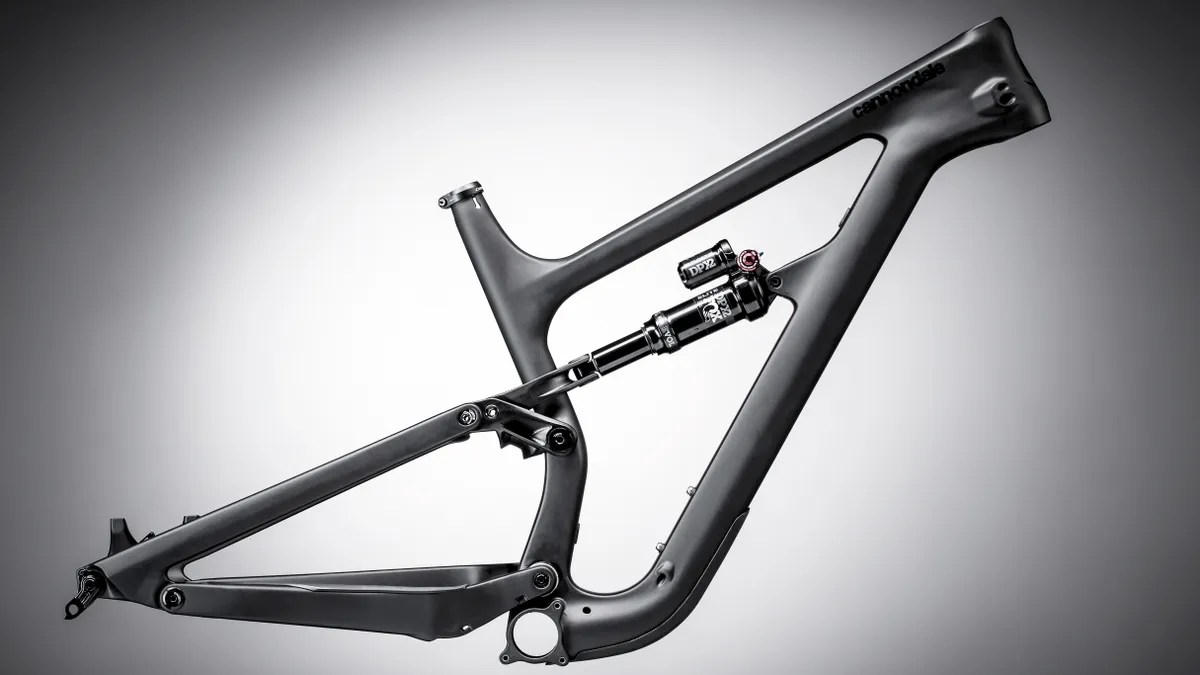
Of course, there are many other Horst-link bikes out there, especially since Specialized’s patent expired, but the Habit has something special going on. The suspension layout is subtly different for each frame size.
Why would you want that? Taller riders have a higher centre of mass, which means the bike is more prone to pitch forwards due to braking forces. Meanwhile, shorter riders are more likely to experience suspension that becomes harsher under braking.
Anti-rise is the amount by which rear suspension resists the weight-transfer caused by braking. Too little and the rear suspension will rise under braking, exaggerating brake-dive; too much, and the suspension can become unreactive to bumps. A Horst-link suspension layout allows the amount of anti-rise to be changed independently of pedalling forces. It also allows the levels of anti-rise to be greatly reduced relative to a single-pivot-based design, such as the previous Habit.
You can see this difference in anti-rise in the below diagram. Here, the green line represents anti-rise for the old Habit; the other lines show the anti-rise for the new Habit, calculated for each frame size. According to design engineer, Luis Arraiz, this reduced anti-rise resulted in faster braking deceleration and better bump absorption while braking when a horst-link bike was compared to a single-pivot layout.
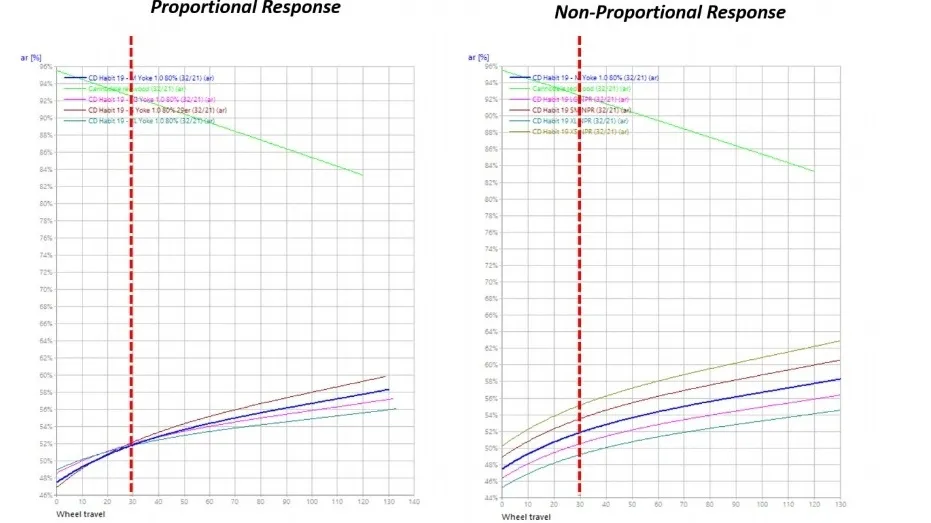
Cannondale looked at size data and real-world rider positions to work out the location of the centre of mass during braking for an average rider on each frame size. Then it took advantage of the Horst-link design to tweak the pivot locations for each frame size, with the aim of compensating for the higher centre of mass typical of riders on larger frame sizes.
So, Cannondale claims the anti-rise is similar for the average size-small rider and the average size-XL rider, so both should experience similar suspension behaviour when braking. Cannondale calls this system Proportional Response. In the above graphs, you can see how the Habit is designed such that all frame sizes have the same anti-rise at sag. This calculation is based on the average centre of mass position Cannondale has worked out for each frame size.
If you want to learn more about the trade-offs in suspension design this article goes into great detail on the subject.
Cannondale Habit geometry
Like most new bikes, the redesigned Habit is longer, lower and slacker than its predecessor. That may sound unimaginative and clichéd, but this trend is no bad thing in my book.
The head angle measures 66 degrees, while the reach has grown to 430mm in a size Medium, or 490mm in XL (tested). The bottom bracket height sits at 339mm.
The Habit has a geometry adjusting flip chip. This adds 5mm to the bottom bracket height, and 0.5 degrees to the head and seat angles. This is designed to accommodate 27.5+ wheels without the bottom bracket getting too low, but could also be used to raise and steepen the geometry, if desired.
Cannondale Habit builds
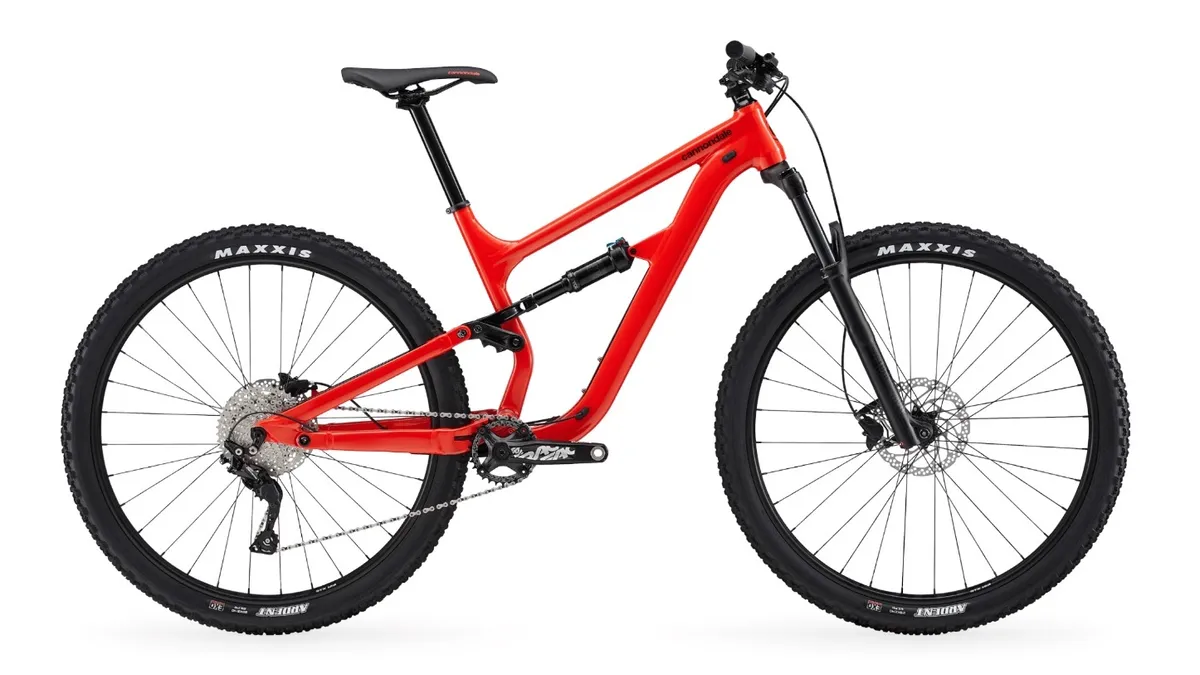
The Habit is available in six “men’s” models and three women’s models. The latter use slimmer grips, a narrower bar, and women’s saddles. The Women’s range also includes an XS frame size with 27.5-inch wheels.
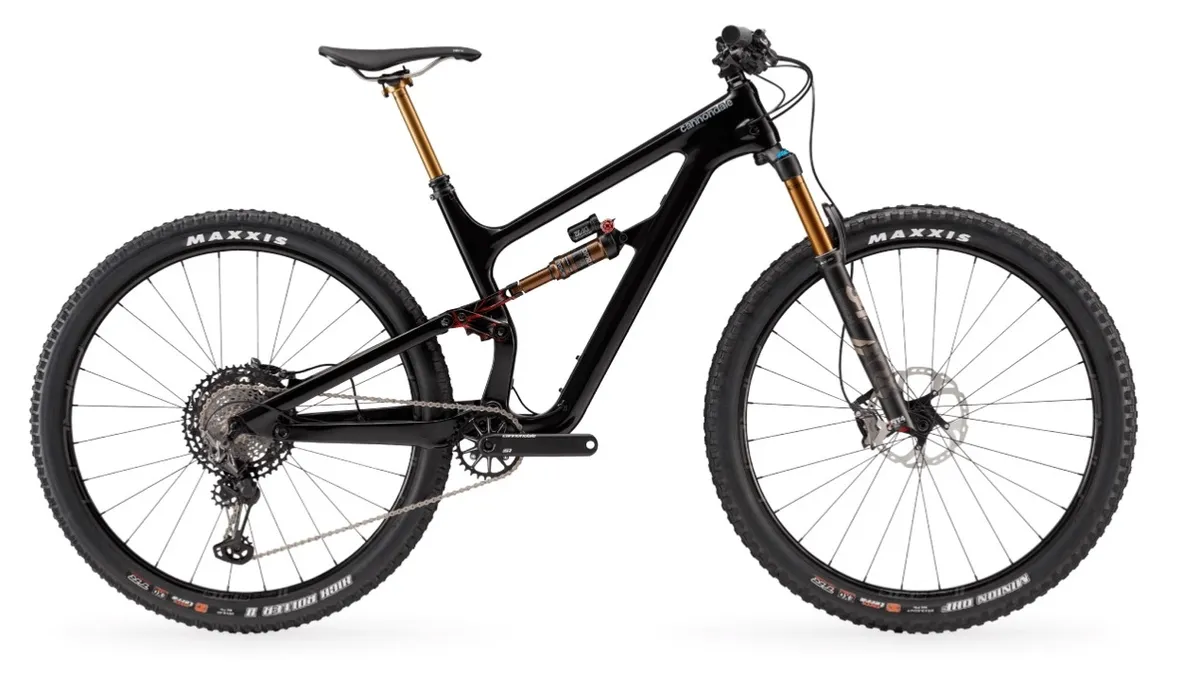
The top-spec Carbon 1 model — with carbon frame, Fox Factory suspension and Shimano XTR drivetrain — will cost £6,000 / $7,900 / €7,149, while the cheapest model — with an alloy frame, RockShox Sektor fork and Shimano Deore 1x10 drivetrain — will cost £1,800 / $2,625 / €N/A
Cannondale Habit weight
On my own scales, I weighed the Carbon 1 bike in a size Large at 13.1kg, while an Alloy 4 model in size medium weighed 15.6kg.
Cannondale Habit ride impressions
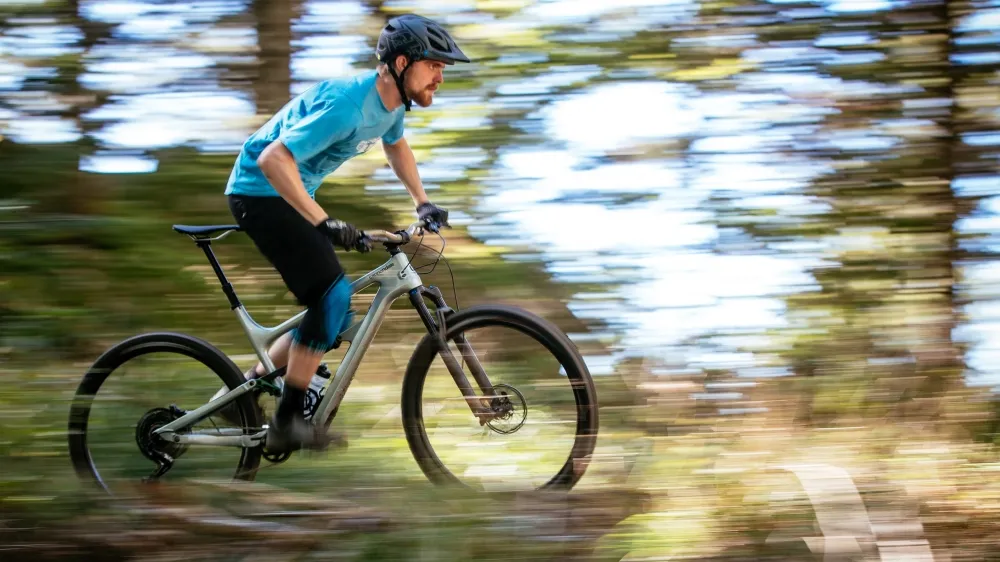
I rode an XL Habit Carbon 2 — priced at £4,400 / $5,250 / €5,100 — for two short rides, on unfamiliar terrain, near Cannondale’s offices in Freiburg, Germany.
While this is no way to comprehensively test a bike, I’d summarise the Habit as a well-balanced and lively trail bike.
It pedals well, there’s not too much suspension bob when pedalling out of the saddle, and barely any when pedalling seated. This makes the bike feel efficient and taut under power. Yet, there’s very little feedback through the pedals and it can be pedalled over bumps while tracking the ground nicely.
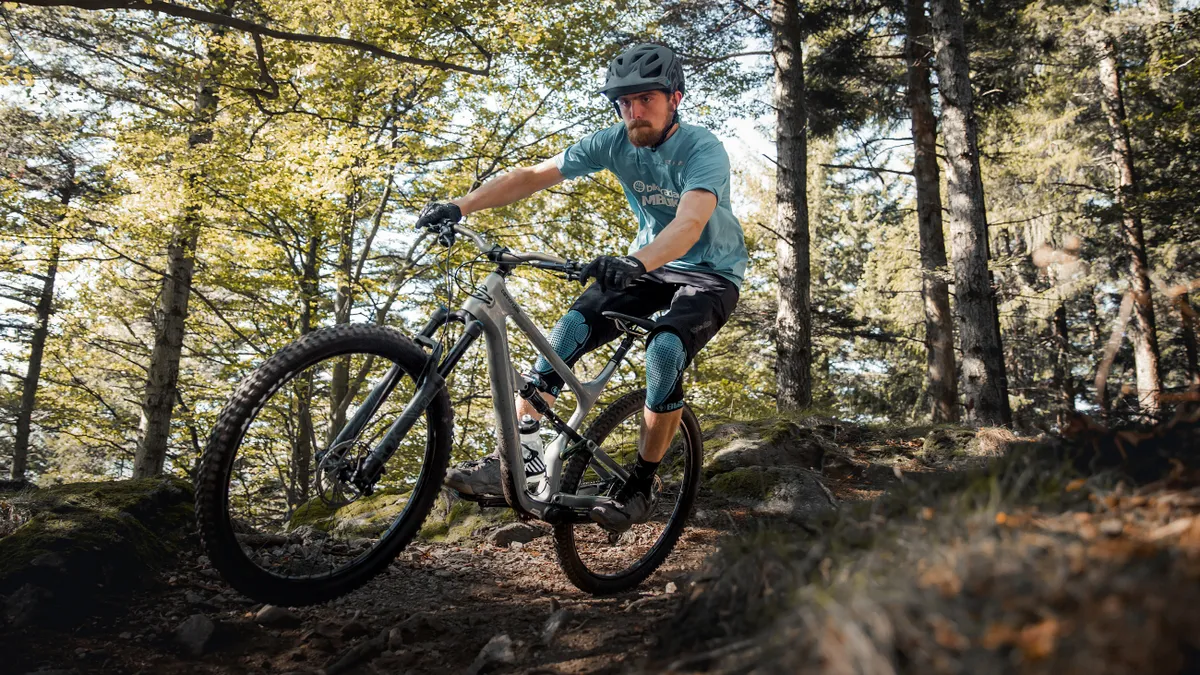
When descending, too, the rear suspension works well, especially with the rebound set quite fast. I didn’t have a chance to ride any prolonged steep sections, but the way this bike handles braking is nothing out of the ordinary.
I don’t think the Proportional Response design is a game-changing feature, even on the largest frame size, but it’s good to see Cannondale is thinking about the needs of riders at all points on the height-spectrum.
The low bottom bracket makes for a nicely centred feel, especially once I’d fitted a higher-rise handlebar to suit my tastes, and the meaty Maxxis tyres boosted confidence from the get-go too.
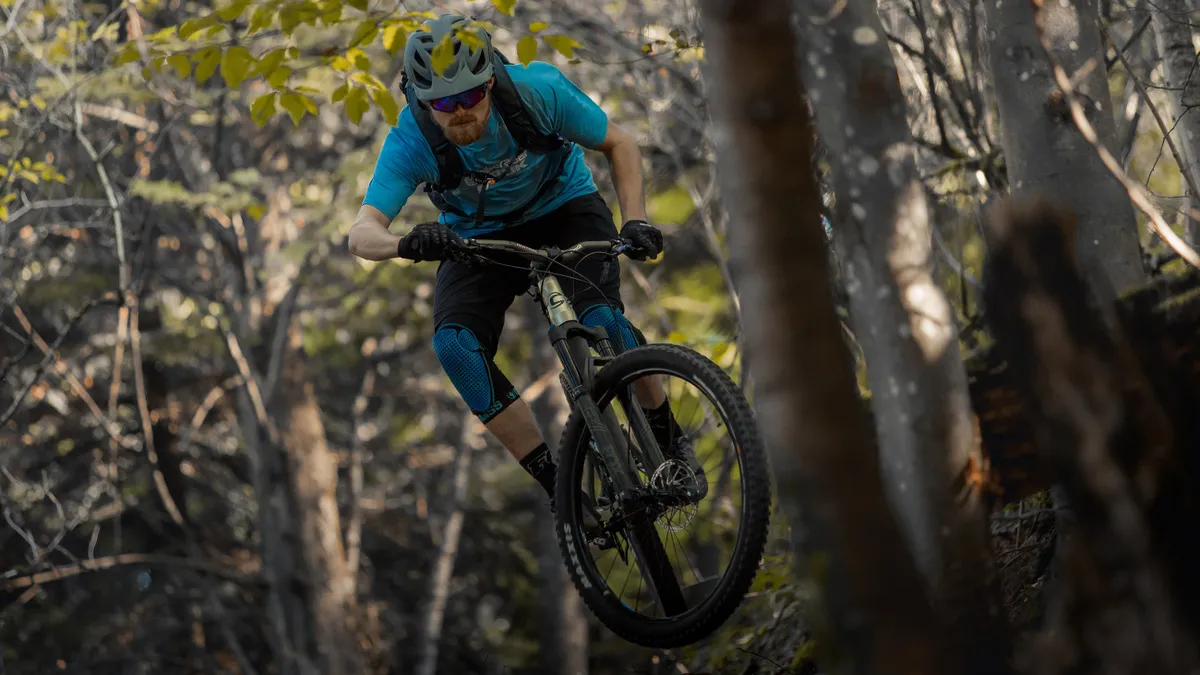
While the Habit pedals well, I would prefer a steeper seat tube angle. I ended up running the saddle slammed forwards on the rails to put my hip further forwards, but still found my weight was too far back on steep climbs.
I’d also swap the stem for something a touch shorter to improve the steering feel. While the 490mm reach is relatively generous for a bike in this category, at 190cm tall I would appreciate more room even with the stock stem.
Rest assured, we’ll be testing a Habit on more familiar terrain in due course.
